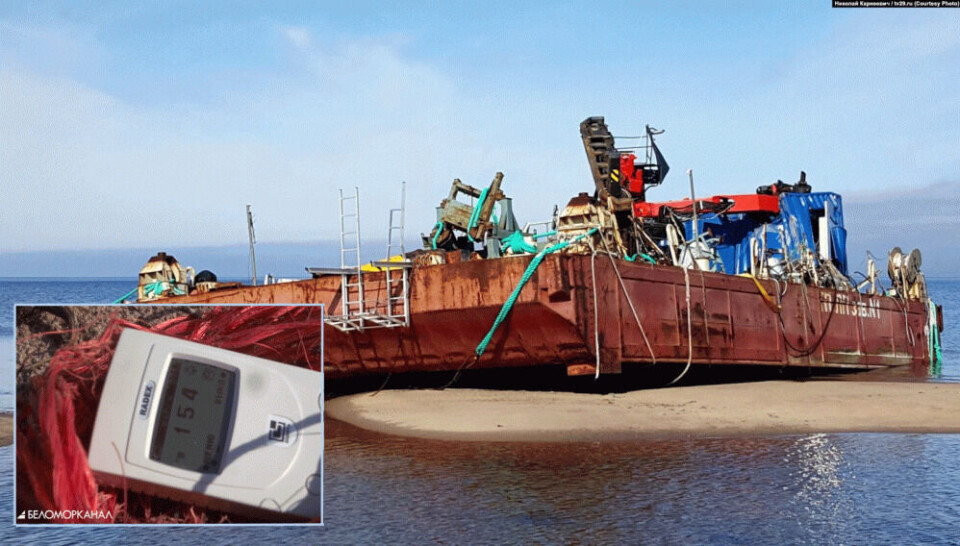
Russian nuclear blast debris is still emitting radiation, reports say
Journalists in northern Russia have measured high levels of radiation near two abandoned boats that were brought ashore following last month’s mysterious accident during a test at a military site that has raised international concerns and safety fears.
Five nuclear engineers were killed in a liquid propulsion system explosion on a sea platform Aug. 8, leading to a brief spike in radiation by up to 16 times in nearby cities. News outlets have recently reported, citing U.S. intelligence and photographs from the site, that the blast occurred during a mission to salvage a nuclear-powered cruise missile from the bottom of the sea.
“This beach should be decontaminated,” Bruno Chareyron, a research director at the French radiation-monitoring NGO CRIIRAD, told the U.S.-funded Radio Free Europe/Radio Liberty (RFE/RL) news outlet.
“The authorities should collect the radioactive debris [and] monitor the contamination of the water, sand sediments, fauna and flora,” Chareyron was quoted as saying.
Rosatom, Russia’s state nuclear company, told RFE/RL that it “is not in a position to comment on classified defense contracts and military tests.”
The authorities have given a muted response to the explosion, seeking to quiet public fears. Four of Russia’s nuclear radiation monitoring stations went silent days after the explosion, and doctors in the region have said they weren’t warned that they would be treating patients exposed to radiation.
The secrecy surrounding the accident has led outside observers to speculate that what the explosion involved the Burevestnik nuclear-powered intercontinental cruise missile, dubbed the SSC-X-9 Skyfall by NATO.
President Vladimir Putin later said the mishap occurred during testing of what he called promising new weapons systems.
This article first appeared in The Moscow Times and is republished in a sharing partnership with the Barents Observer.















